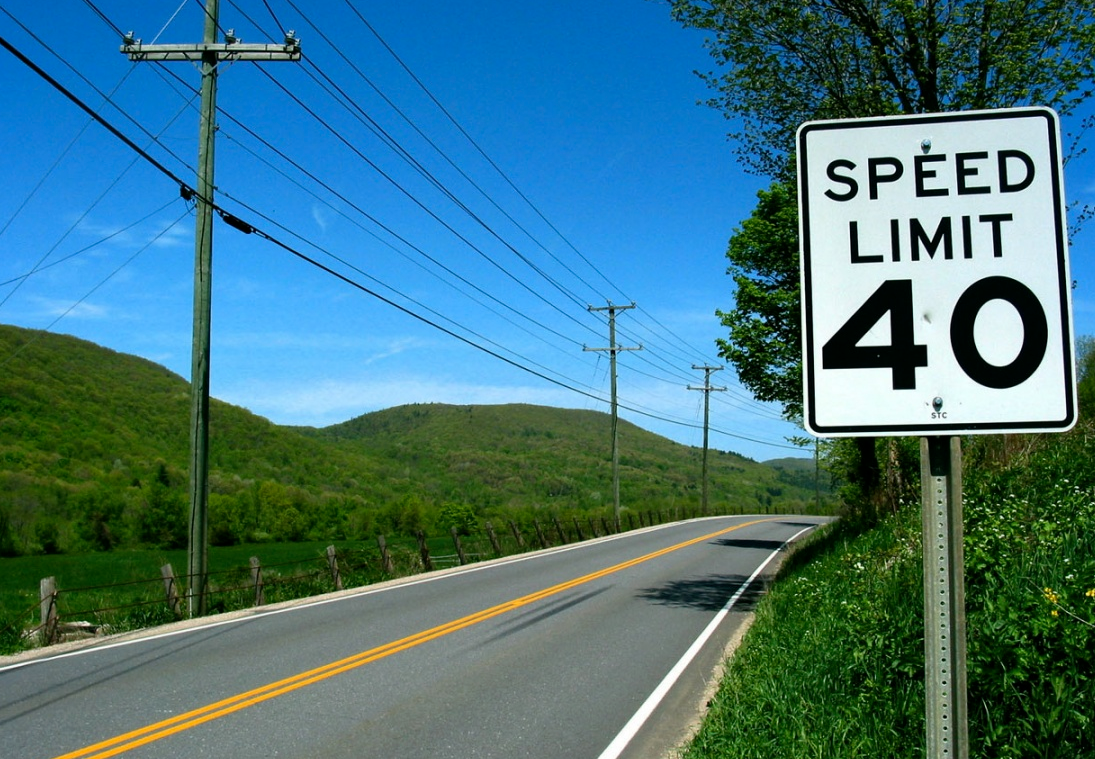If you have a Tom Tom navigation unit in your vehicle you may not know that the aftermarket direction providers have been keeping an eye on just how fast you're driving. Apparently, over the past two years the portable GPS based in car navigation system has been collecting data as part of their Speed Profiles program in an attempt to help fleet drivers find the fastest routes from coast to coast in order to boost their efficiency and get them to their destinations.
As part of their findings, their study has shown that American drivers tend to be law abiding citizens on the highway, although we do seem to be pushing the upper limits of those designated speed zones. It makes sense that the less densely populated areas across the country's midsection show the highest average speeds, with Mississippi leading the pack showing typical speeds of just over 70 MPH followed closely by New Mexico. However the single fastest interstate in the continental U.S. happens to be a stretch of I-15 that runs from Utah into Nevada, showing an average speed of 77.67 MPH. So don't worry if you were one of those drivers pushing the envelope, Tom Tom isn't sharing your speeding habits with the fuzz, they are just trying to help all of its clients get to where they want to go a little quicker.
Let us know if you have any Top Speed roads of your own.
Press release after the jump.
PRESS RELEASE:
Concord, MA – January 21, 2010 – TomTom, the world's leading provider of navigation solutions and digital maps, today revealed the first fully detailed view of which interstate highways are the fastest and slowest in the United States. Although the average speed on some U.S. roads slightly exceeded the speed limit, data from GPS users show that, overall, drivers tend to stay within speed limit range on most major U.S. highways.
The results were calculated using data from Speed Profiles™, the historical speed database from TomTom's map business unit Tele Atlas that helps personal and professional fleet drivers find the best routes. Speed Profiles is integrated as IQ Routes™ on TomTom devices. It aggregates, anonymously, the actual speeds that millions of GPS-enabled drivers have traveled over the last two years to provide the most accurate view of historic speeds available.
Data were organized to show the average speeds on interstate highways and to reflect only free flow speed data, or average speeds when there is no traffic present. When compared to a database of posted speed limits, the results indicate that the average U.S. driver stays within the speed limit range on most urban and rural interstate highways:
* Even drivers in the fastest states tend to stay within the speed limit range. Across all interstate highways, Mississippi has the fastest roads, with average speeds of just over 70 MPH and posted speed limits ranging from 65-70 MPH. New Mexico (70 MPH actual average, 70-75 MPH posted speed limits), Idaho (70 MPH actual average, 65-75 MPH posted speed limits), Utah (70 MPH actual average, 65-75 MPH posted speed limits) and Alabama (70 MPH actual average, 60-70 MPH posted speed limits), round out the top five states with the fastest interstates in the country;
* Famous worldwide as a road network where drivers can go as fast as they like, Germany's Autobahn has speed limits in some areas, but drivers typically travel over 100 MPH in unregulated spots. Where is America's Autobahn? Our fastest road is on I-15 in Utah and Nevada, with speeds averaging 77.67 MPH, although some spots on that highway allow 80 MPH;
* The nation's fastest area is in the middle part of the country. Seven of the top 15 states with the fastest highways are in that area. The average speeds on roads in Mississippi, Nebraska, Kansas, Iowa, Idaho, Alabama and Missouri exceed 67 MPH; the average posted speed limits in those states is 70 MPH;
* Speeds on single interstate highways that span a number of states, such as the I-95 route running from Northern Maine to Southern Florida, differ dramatically depending on where you are. Along that highway, the fastest section is in South Carolina; the slowest sections are in Virginia, New York, New Jersey and Connecticut.
* Findings for the Washington D.C. area echo results found in TomTom's recent study of the most congested traffic spots in the U.S. (see www.teleatlas.com/WhyTeleAtlas/Pressroom/PressReleases/TA_CT038317) Washington D.C. has the slowest average MPH on its interstate highways, at 46 MPH. After Washington D.C., the states with the slowest interstate average MPH are: Hawaii (53 MPH); Delaware (61 MPH); Rhode Island (63 MPH); and Oregon (63 MPH).
The Speed Profiles database currently covers 85,000 miles of interstate highways in the United States. To see lists of the top 20 states with the highest MPH averages, maps of the fastest and slowest highways in the U.S. and for further information, go to www.teleatlaspresskit.com.

